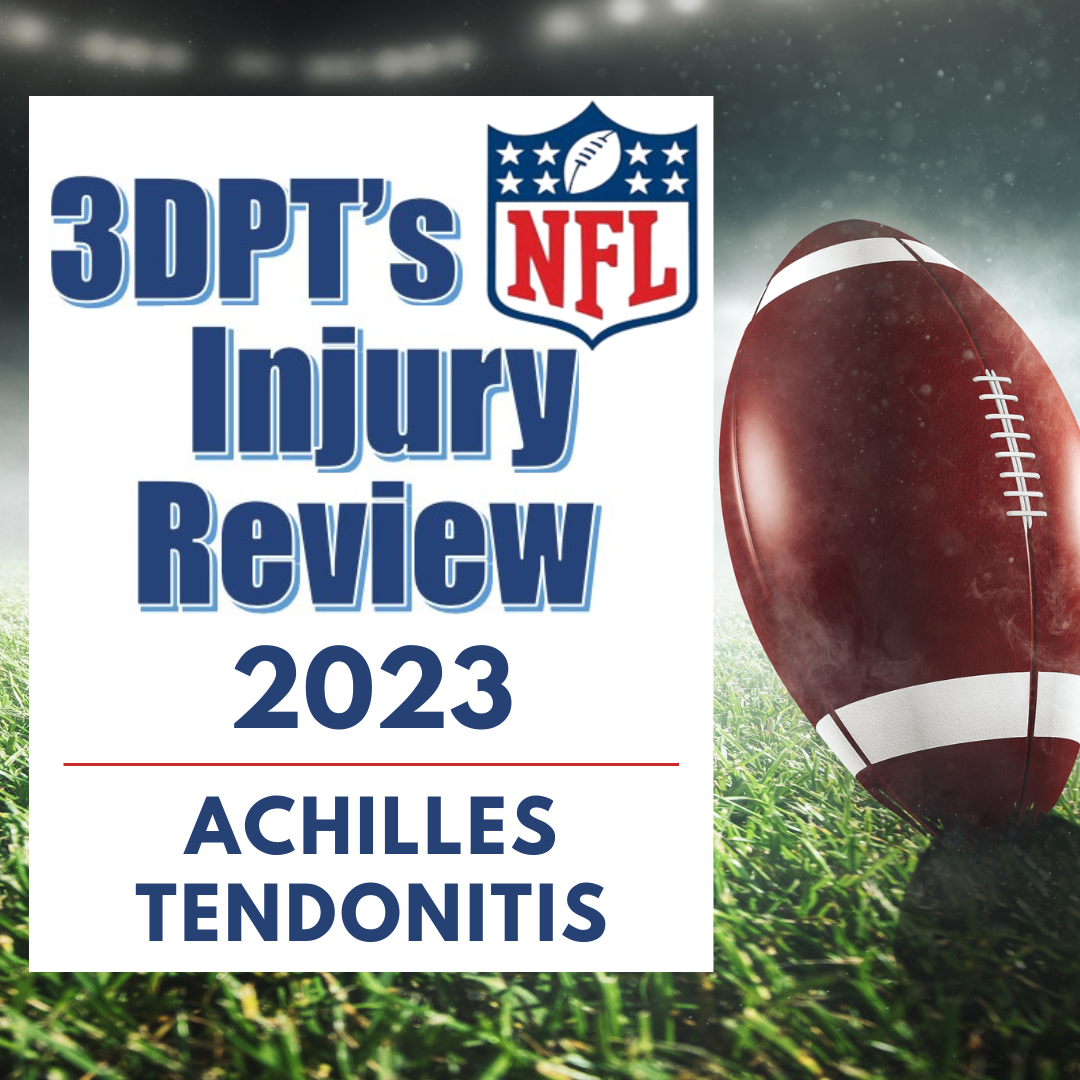
Achilles injuries are common amongst football players, as we’ve seen with some significant season-ending injuries to New York Jets quarterback Aaron Rodgers and Baltimore Ravens star running back J.K. Dobbins. Achilles tendonitis is not often a season-ender, but it can still have a high impact on an athlete’s performance and overall well-being. One often overlooked factor in the development and exacerbation of Achilles tendonitis is the playing surface. In this post, we will explore the symptoms, physiology, and the crucial role of playing surfaces in the occurrence of Achilles tendonitis in football players.
Symptoms of Achilles Tendonitis: Achilles tendonitis, also known as Achilles tendinopathy, typically manifests with a range of symptoms, including:
- Pain and stiffness: Football players with Achilles tendonitis often experience pain along the back of the heel and the lower leg, especially during or after physical activity.
- Swelling and tenderness: The Achilles tendon may become swollen and tender to the touch.
- Decreased range of motion: Players may notice a reduced ability to flex their foot or point their toes.
- Morning stiffness: Pain and stiffness can be particularly intense in the morning or after prolonged periods of rest.
Physiology of Achilles Tendonitis: Understanding the physiological aspects of Achilles tendonitis is crucial for managing and preventing this condition in football players.
- Overuse and repetitive stress: Football involves a significant amount of running, jumping, and sudden changes in direction. These movements place excessive stress on the Achilles tendon, causing microtears and inflammation over time.
- Poor biomechanics: Factors like improper footwear, inadequate stretching, and biomechanical imbalances (e.g., flat feet or overpronation) can contribute to increased strain on the Achilles tendon.
- Reduced blood supply: The Achilles tendon has a relatively poor blood supply compared to other tissues, making it more susceptible to injuries and slower to heal.
Impact of Playing Surface: The type of playing surface can have a profound impact on the development and severity of Achilles tendonitis in football players:
- Artificial turf vs. natural grass: Artificial turf is known for being harder and less forgiving than natural grass. The unyielding nature of turf can increase the risk of tendon injuries due to the increased shock absorption required by the Achilles tendon during running and sudden movements.
- Surface temperature: Hot artificial turf can amplify the risk of Achilles tendonitis, as high temperatures can reduce the tendon’s elasticity and increase the likelihood of injury.
- Cleat selection: The choice of cleats can affect the load and pressure on the Achilles tendon. Inadequate cleat selection can exacerbate biomechanical issues and contribute to tendonitis.
Prevention and Management: Preventing Achilles tendonitis and managing its symptoms are crucial for football players:
- Proper footwear: Choose well-fitting and appropriate cleats that support your foot’s biomechanics.
- Stretching and strengthening: Incorporate calf stretches and strengthening exercises into your training routine.
- Adequate rest and recovery: Allow time for your body to heal and recover between intense training sessions.
- Playing surface assessment: Be mindful of the playing surface and its conditions. Take precautions when playing on artificial turf, especially in hot weather.
- Seek professional help: If you experience Achilles tendonitis symptoms, consult a sports medicine specialist or physical therapist for a customized treatment plan.
Conclusion: Achilles tendonitis is a common ailment among football players, impacting their performance and overall well-being. Understanding the symptoms, physiology, and the influence of playing surfaces on this condition is vital for prevention and effective management. Football players should prioritize proper footwear, stretching, and recovery to minimize their risk of Achilles tendonitis, while also considering the impact of the playing surface on their Achilles health.
In the video 3DPT West Berlin’s Dr. Grant Silhanek demonstrates a few types of exercises that would be performed throughout a rehabilitation program for Achilles tendonitis.
Categorized as: 2023 NFL Blog